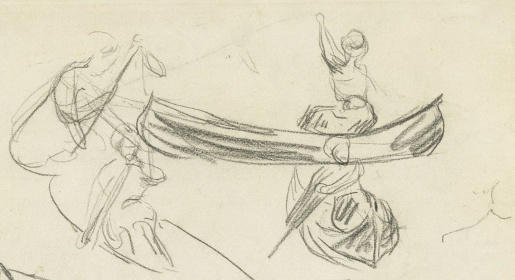What is an artist’s artist? In the person and painterly practice of David Schutter, this elusive phrase connotes a singularly deep awareness of art-historical precedents that is best exemplified both in a dogged dedication to time-honed techniques as well as his ongoing dialogue with past masters, such as (to name but a few) Bernardo Parentino, Frans Hals, Salvator Rosa, Antoine Watteau, Jean-Baptiste-Camille Corot, Édouard Manet, and Max Liebermann—the kind of artist who artist David Schutter could be said to be in turn.
Schutter, who was born in Pennsylvania in 1974, is best known today for his mid-scale, quasi-monochrome gray paintings—meticulous marvels of surface texture and illusory nuance that, when seen up close, reveal the riches and range of this seemingly most neutral of colors. Indeed, the crux of Schutter’s project is located in the patience and probing focus of his gaze; so too the experience of viewing his work requires lengthy looking to better appreciate the understated drama of paint applied to the picture plane. Two such paintings are on view in Kassel and act as deposits of the artist’s memory of having spent long days just looking at two works by the early Renaissance painter Parentino now housed at the Galleria Doria Pamphilj in Rome. Both works depict Saint Anthony Abbot, one showing him giving alms to the poor, while “shunning gold” in the other—timeless motifs rendered more than merely topical in the current crisis-stricken economic climate. If gray is a color that refuses to take sides, so to speak, all the more import becomes attached to the “originals” Schutter models his memories after, more often than not images charged with brooding political meaning.
In recent years, Schutter has increasingly turned to drawing’s complicated relationship to painting as a form of prelude, particularly dwelling upon the notion of études, or studies: foreshadowing as much as scrawling, draft versus sovereign eidolon. In Schutter’s hand, the pencil or stylus becomes an even more powerful mnemonic tool, capturing the fleeting, capricious impressions of time spent poring over drawings made centuries ago. Or in the case of a more recent (and politically much more sensitive) vintage, the works drawn from the Gurlitt art trove highlight the artist’s detective-like approach to art-historical dialogue and interest in the mania of collecting.
—Dieter Roelstraete


